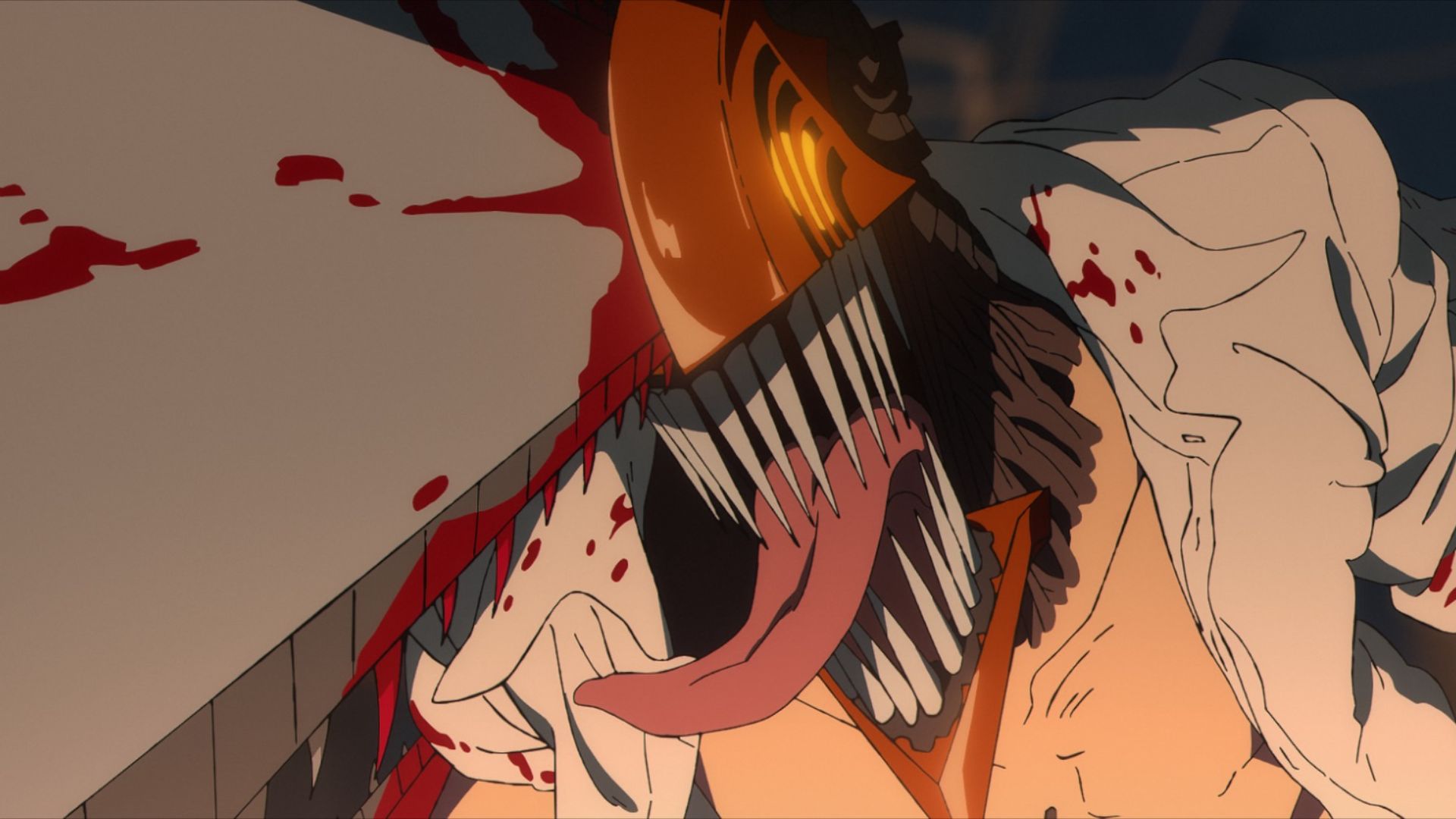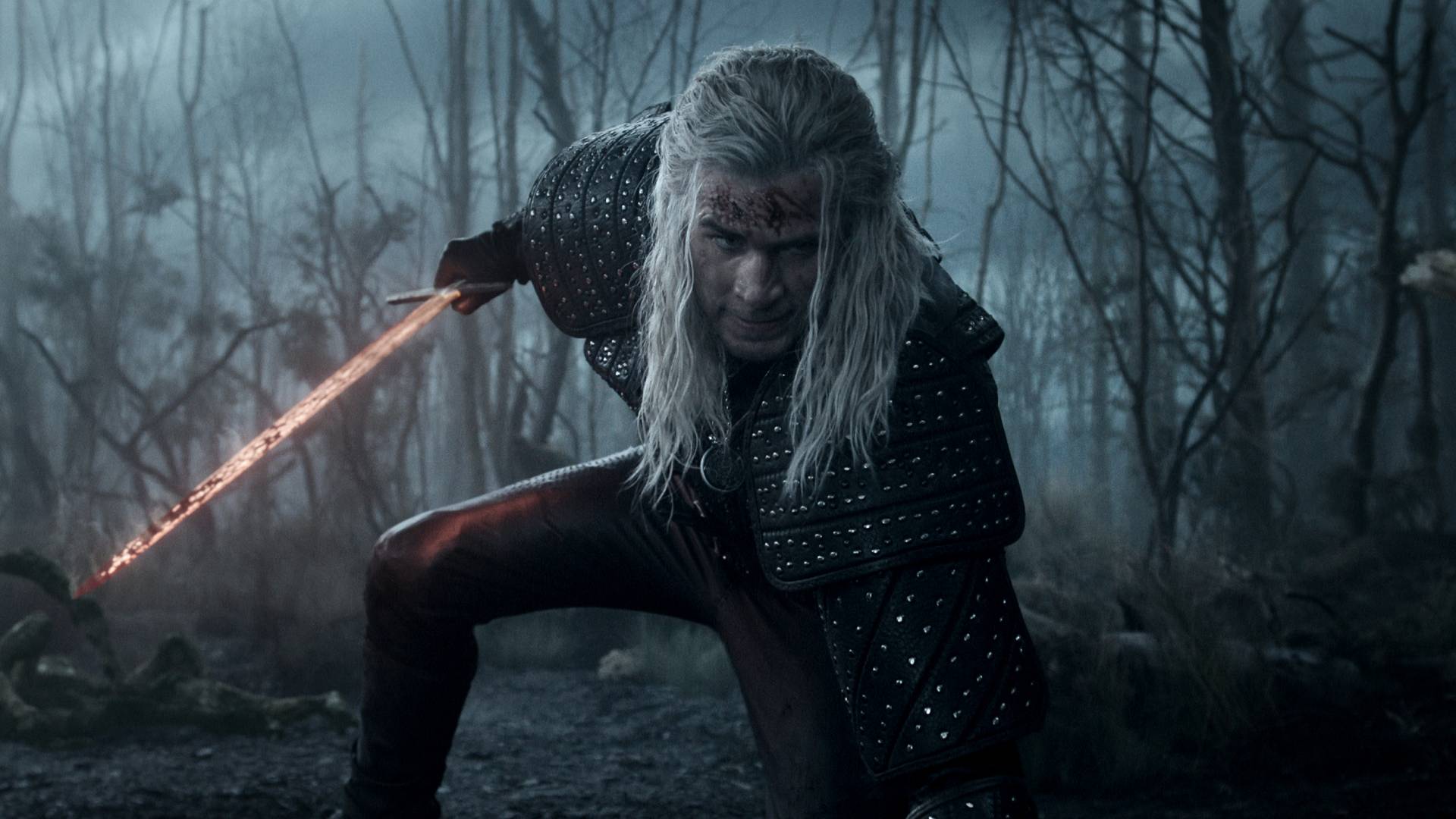Assassin's Creed 2 - how Ubisoft took its time and turned a flawed series into Assassin's gold
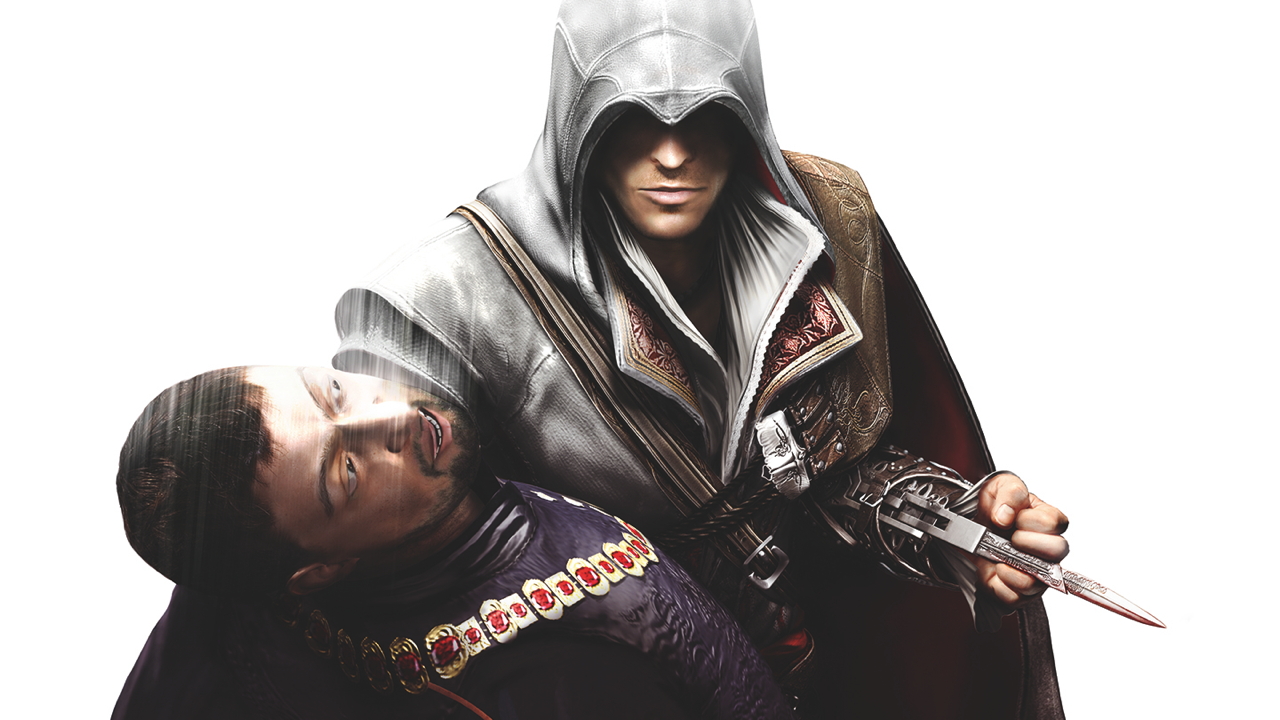
We did it. We've had a year off from Assassin's Creed. Yes there was the side-scrolling Chronicles trilogy and the Assassin's Creed movie but for the first time in seven years we didn't get to climb, leap or stab our way through a new part of the globe in a full fat Assassin's Creed game. Mixed reviews and disappointing sales of 2015’s Syndicate meant that for the next game in Ubisoft’s once untouchable series the studio announced that it was taking a year off. This could be exactly what this long-running series really needed, especially if we look back to the last time Ubisoft took a year off between instalments to drastically rethink Creed’s future.
The original 2007 Assassin’s Creed is by no means a bad game. You play Desmond Miles, a bartender in the 21st century who’s been kidnapped by the sinister Abstergo Industries. Using a machine called the Animus, they force dull Desmond to relive the memories of a far more interesting ancestor during the Third Crusade. In what was an incredible technical achievement at the time, Ubisoft put us in a vast open-world ancient Jerusalem, with crowded streets full of beggars, drunks and people just hoping to get through another day without being stabbed in an alley.
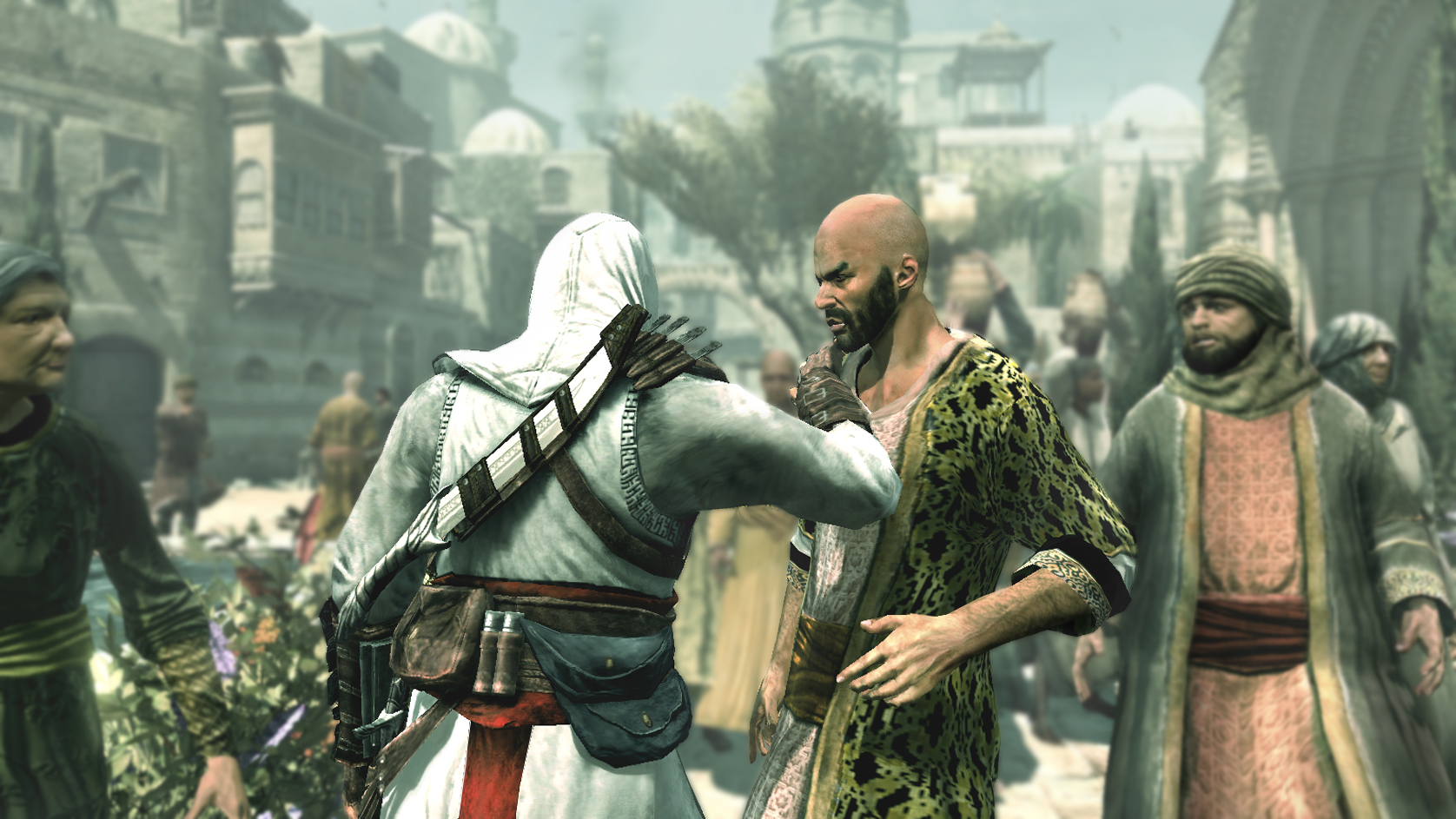
Parkour skills let you clamber up buildings and leap from rooftop to rooftop, offering breathtaking views, and helping you to reach heights an average sandbox wouldn’t. Play five minutes of Assassin’s Creed today and it’s still impressive. But those five minutes over and over get samey. Great job on the sense of scale, guys, but now we’d like something fun to do.
Sure, you can eavesdrop on shady types who are imbecilic enough to discuss secret plans in Jerusalem’s streets. Sadly, since eavesdropping involves staying still while two NPCs jabber on at each other, Ubisoft has accidentally built the world’s most expensive medieval bench simulator. Beyond that, there is too much horse riding from A to B and meaningless collectibles all over the map (a lazy habit the studio struggles to shake to this day). Its lack of colourful side activities, serious tone and endless, endless monologues from the cast (even killing your targets barely shut them up) held back an amazing idea.
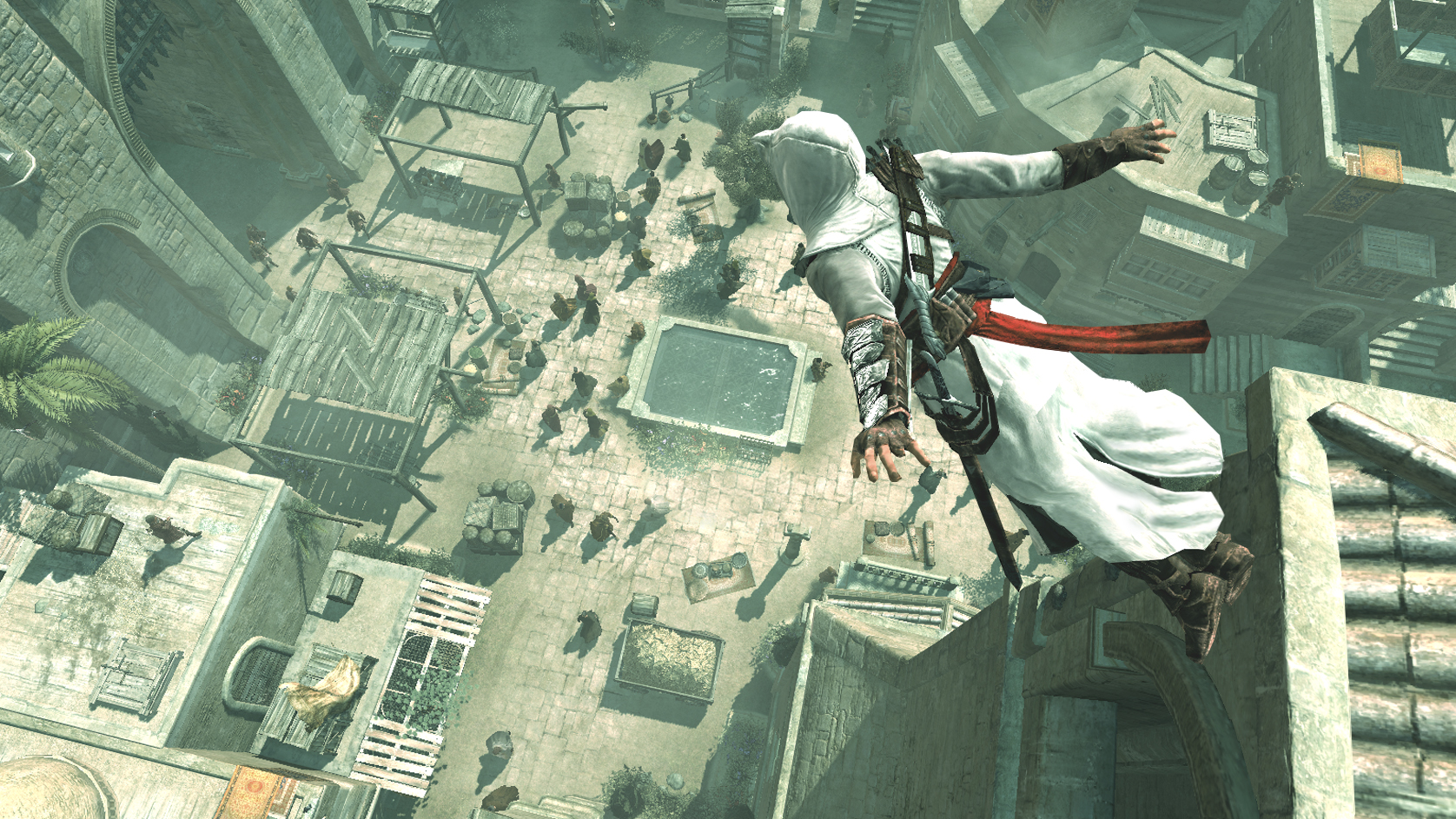
So Assassin’s Creed was a mixed success then, and by ‘mixed success’ we mean ‘sold over eight million copies’. Sales like that made a sequel inevitable. What wasn’t so foreseeable was such a confident leap in quality. Given the success of the first game, it’s surprising just how much Creed 2 changed. Jerusalem was dumped for the more colourful and joyous setting of Renaissance Italy. And the hero of the first game, serious grump Altair, was now ancient history, replaced with charming ladies’ man, Ezio Auditore da Firenze.
Ezio’s an easy hero to like. He’s introduced trading cocky barbs with another street gang. It’s a scene that could’ve been ripped from Romeo and Juliet, The Three Musketeers or you and your mates getting in a fight at your local pub (you uncultured swine). Where Altair was often running from guards after assassination attempts, Ezio’s tutorial chase is a sprint away from a woman’s bedroom after her furious father walks in on them. But the cad is clearly a good guy deep down, as we see from his relationship with his family. He comforts his heartbroken sister, collects feathers for his sickly younger brother and runs errands for his father, never letting his night-time shenanigans get in the way of the people he’s loyal to.
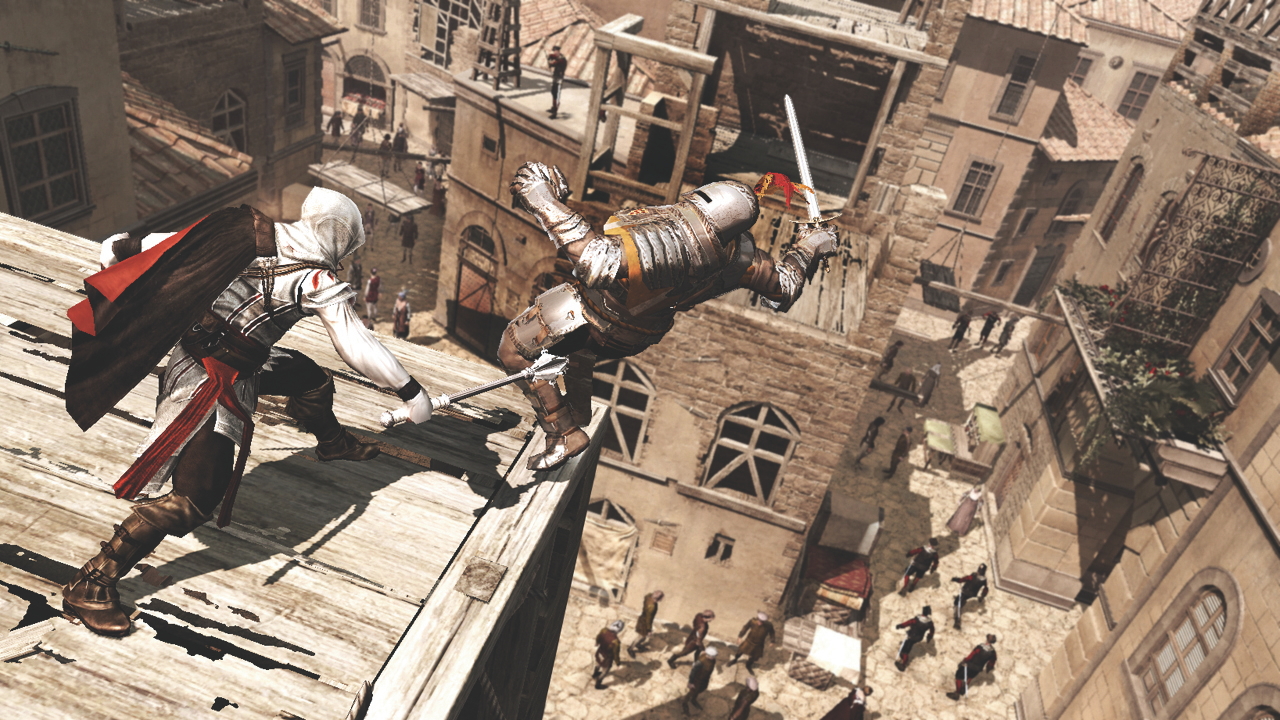
Tragedy soon strikes when half his family is betrayed and put to death. Naturally, Ezio changes after this, enough to join the Assassins, but he doesn’t use it as an excuse to do a complete 180 from a figure of fun into a boring Batman type (looking at you, AC: Unity’s Arno). Ezio’s still the only Creed lead to appear in successive sequels, and if you play through Brotherhood (very good) and Revelations (never mind) you can experience his whole life from birth to death. That’s rare in games, but it’s rarer still we get a hero strong enough to deserve such a dedicated arc. Black Flag’s Edward Kenway is great fun, but no one has come close to the perfection of Ezio. 3’s Connor is a particular low point, unworthy of polishing Ezio’s hidden blades.
Weekly digests, tales from the communities you love, and more
Renaissance Italy and its vast sprawl of districts make for beautiful playgrounds that still look great seven years on. Italian architecture isn’t as pale and featureless as Jerusalem’s obsession with white boxy blandness. Running along rooftops and swinging from shop signs (as onlookers wonder if you’re drunk) makes for a world that’s more joyful than the first game. His running speed is faster and the hiding places are more inventive (jumping in water would mean ‘game over’ last time, but now you can briefly hide under the surface to escape from angry guards and break their line of sight). It wasn’t called the ‘Renaissance’ because it was ugly, after all, and virtual Italy’s magnificent buildings are gorgeous to climb. We almost feel bad for getting Ezio’s filthy hands all over their stonework.
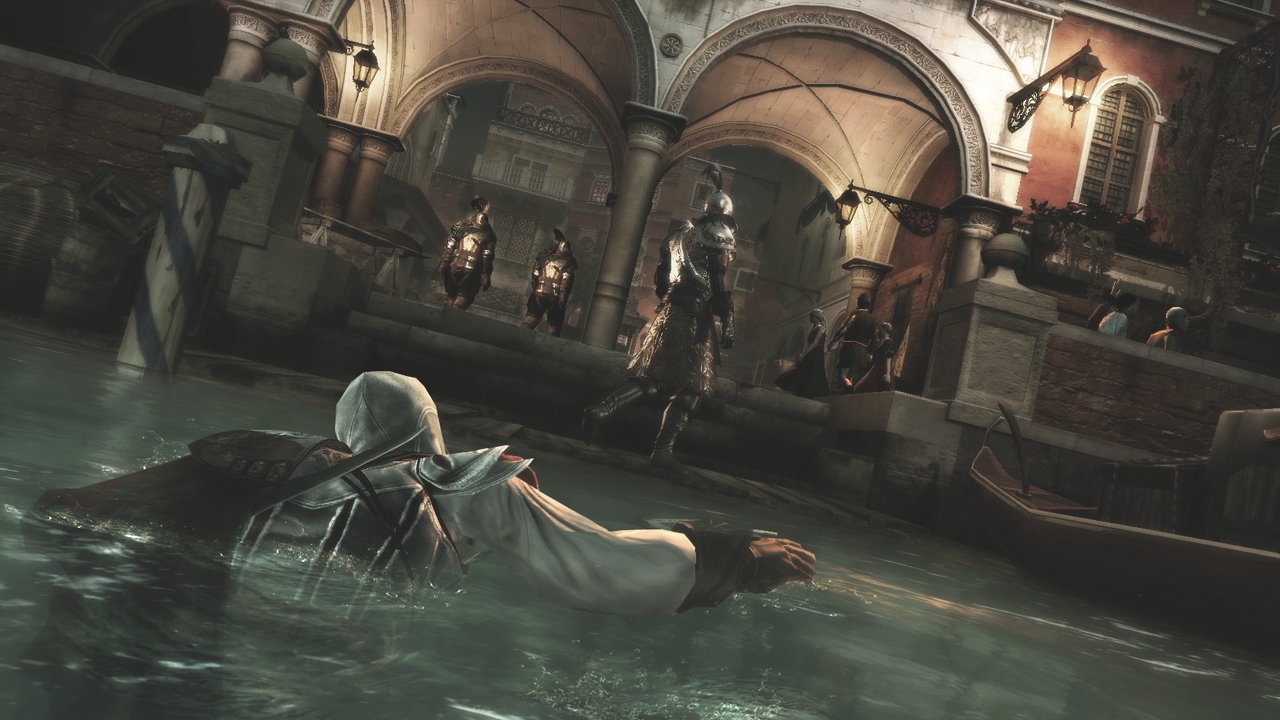
Extras and secrets far exceed that of the first game (without succumbing to the feature bloat that hurt later sequels). Concerns were raised deep in production that there wasn’t enough variety, so a new team from Ubisoft Singapore were assigned with building new levels and more linear missions. Explore Italy with enough care, and you discover these tombs, which play out like deleted scenes from the excellent Prince of Persia series. Completing all six will reward you with Altair’s armour from the first game, strong enough to convince us to cosplay as the duller protagonist.
Side activities feel like they took a leaf out of Grand Theft Auto’s breezier playbook, upping the silliness as much as a ‘realistic’ world can take. After Ezio beats up his sister’s unfaithful lover, for example, he can take requests from other bitter women to give more two-timing husbands a good pummelling, like a muscular anti-Cupid. You can race thieves across the rooftops, or run away from angry Italian snobs you’ve just pickpocketed. There are extra assassinations, too, but the game is so long and varied you could ignore all its sidequests and still get a massive experience. A team of more than 450 people (triple the size of the original) just kept cramming in more and more. Play a slightly duff mission and there’s always a stronger diversion waiting just around the corner.
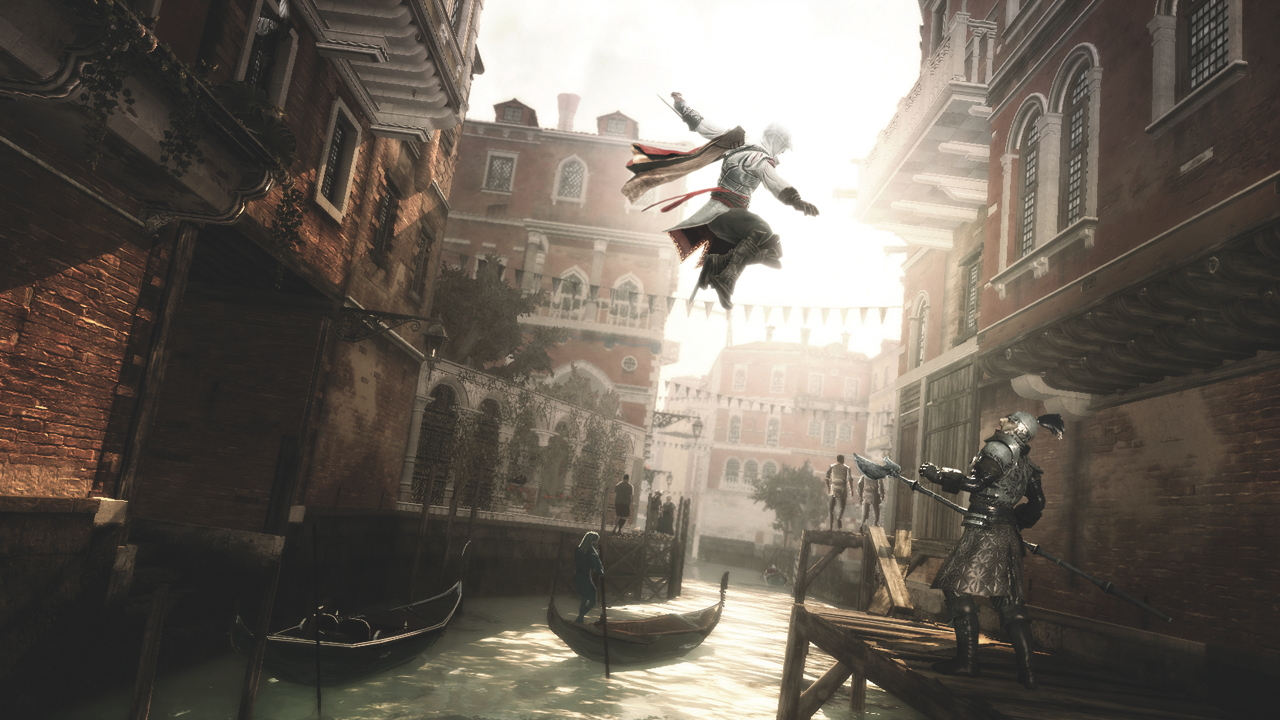
Even the dullest hangover from the last game, Desmond, is livened up by a new setting. A tense opening sees Desmond escape Abstergo Industries and join a small resistance group of assassins hiding in secret. They’re just as keen to put Desmond in the Animus as his captors and the game is wise enough to keep you exploring the past as much as possible. Seems the developers realised ancient Italy might be more fun to explore than your average modern-day warehouse.
Collectibles were more inspired, too. There are the usual feathers and chests for the 100 per cent completion crowd, but no collectible has ever been as beguiling as the 20 hidden glyphs. These markings appear on certain buildings, written in computer code by the mysterious ‘subject 16’ and discovering them all will unlock a darker truth about the Assassin’s Creed universe - a creepy diversion that has Ezio solving puzzles to unlock seconds of eerie footage.
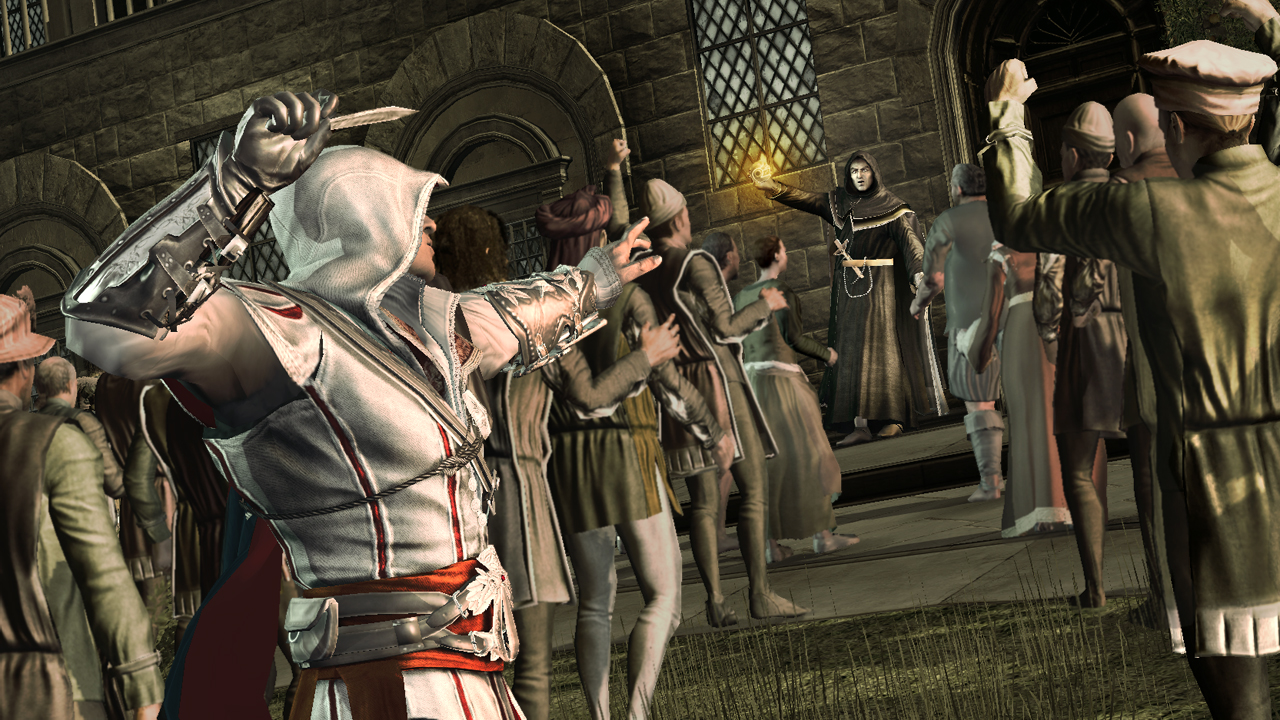
Is that meant to be Adam and Eve running towards some terrible secret? Or a VHS of two nudists out for a jog? You’ll have to find all 20 glyphs to find out. For once, we’re compelled to explore a giant map for collectibles rather than rolling our eyes, even if those feathers can stay hovering atop rooftops until the end of time for all we care. But even the feathers tie nicely into the character’s story arc, as you find out you’ve been collecting them for Ezio’s mother. She’s been shocked into silence ever since the death of her youngest son, and Ezio believes bringing her feathers will remind her of her lost child and inspire her to speak again. That’s a heartbreaking way to motivate us into wasting months finding 100 pieces of bird debris, but also an effective one.
Ubisoft also surround our leading murderer with likable allies. Ezio’s Uncle Mario should’ve gotten his own spin-off, making an excellent first impression by ripping off Nintendo’s most famous mascot. Ezio’s sister, Claudia, is another strong addition, a woman as tough as nails whose fierce reputation hides a big heart. But the game’s breakout star has to be Leonardo da Vinci, who takes a break from his easel to build weapons and weird contraptions for you. He’s basically the Q to Ezio’s 007, even building him a flying machine and a frickin’ gun. That last weapon shoots a bullet straight through the heart of the difficulty curve, but it’s still a brilliant bonus. As AC2 is so full of joy, ideas, references, mad contraptions and ideas way beyond its period setting, it’s surprising Ezio doesn’t end the game scaling a UFO to assassinate an alien.
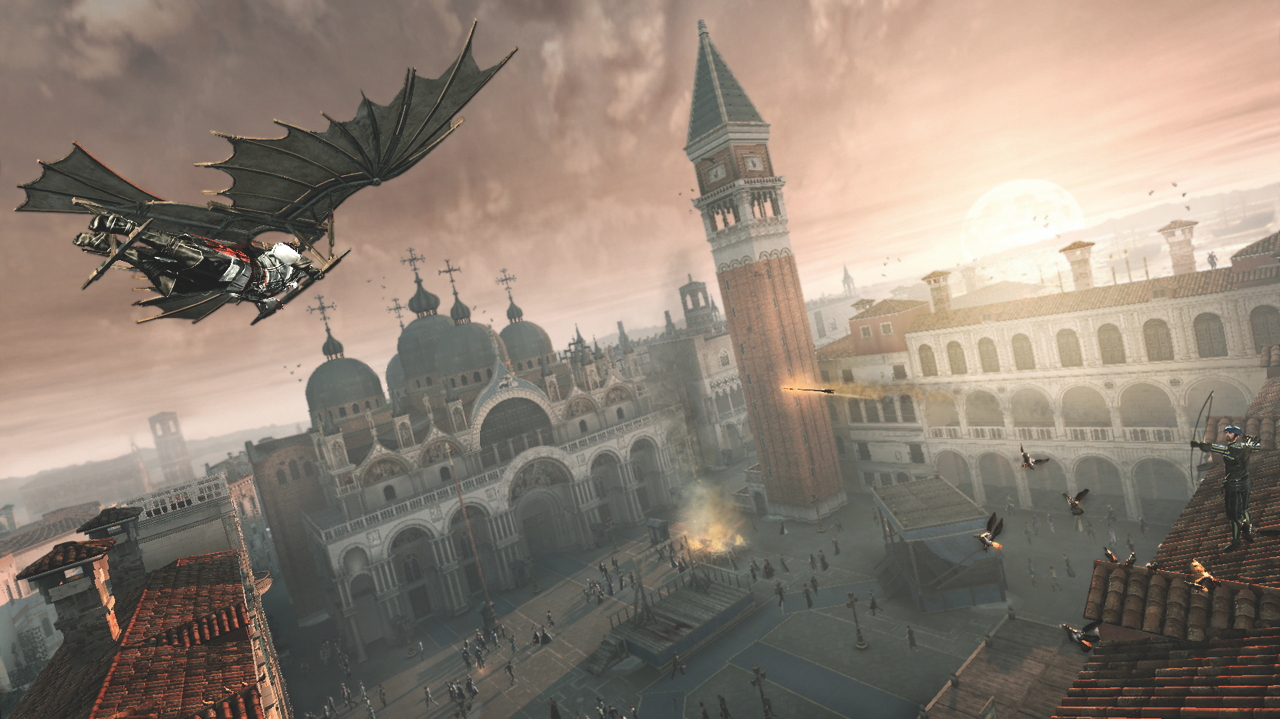
We’re only joking, of course! The actual ending is far more ridiculous. Rodrigo Borgia, better known as Pope Alexander VI, doesn’t enjoy the most spotless of reputations in the history books. He had many mistresses and was played by Jeremy Irons on TV (always a good sign you’re a bad guy). Nonetheless, it’s still a pretty audacious move in a mainstream video game to end it with a fistfight with the Pope. Turns out the Holy Father is also the leader of the Templars. We reckon a few Catholics might have a problem with that claim. A loading screen assures us that the game is a work of fiction made by people of all different faiths, but surely it’s a little blasphemous to punch the pope in the face? Even a virtual one? Best ask your priest...
Whenever a sequel is announced to a disappointing game, we have our fingers crossed for a quality leap as gargantuan as the one that preceded Assassin’s Creed 2. It’s a comparison Ubisoft itself has been cheeky enough to make with their sequel Watch Dogs 2, all but admitting that the flawed original fell far below people’s expectations. If rumours are to be believed, the next Creed will be set in Egypt. But if Assassin’s Creegypt (OXM’s brilliant title) wants to win back the fans, a mere change in setting and throwing a few more features in isn’t going to work. To reignite the Assassins’ cause, it needs to do what AC2 (and the seafaring brilliance of Black Flag) did; not just fix the various problems with the previous games, but blow our expectations to smithereens and recreate what an Assassin’s Creed experience can be.
This article originally appeared in Xbox: The Official Magazine. For more great Xbox coverage, you can subscribe here.

Tom was once a staff writer and then Games Editor for Official Xbox Magazine, but now works as the Creative Communications Manager at Mojang. He is also the writer and co-creator of How We Make Minecraft on YouTube. He doesn't think he's been truly happy since he 100% completed Rayman Legends, but the therapy is helping.

